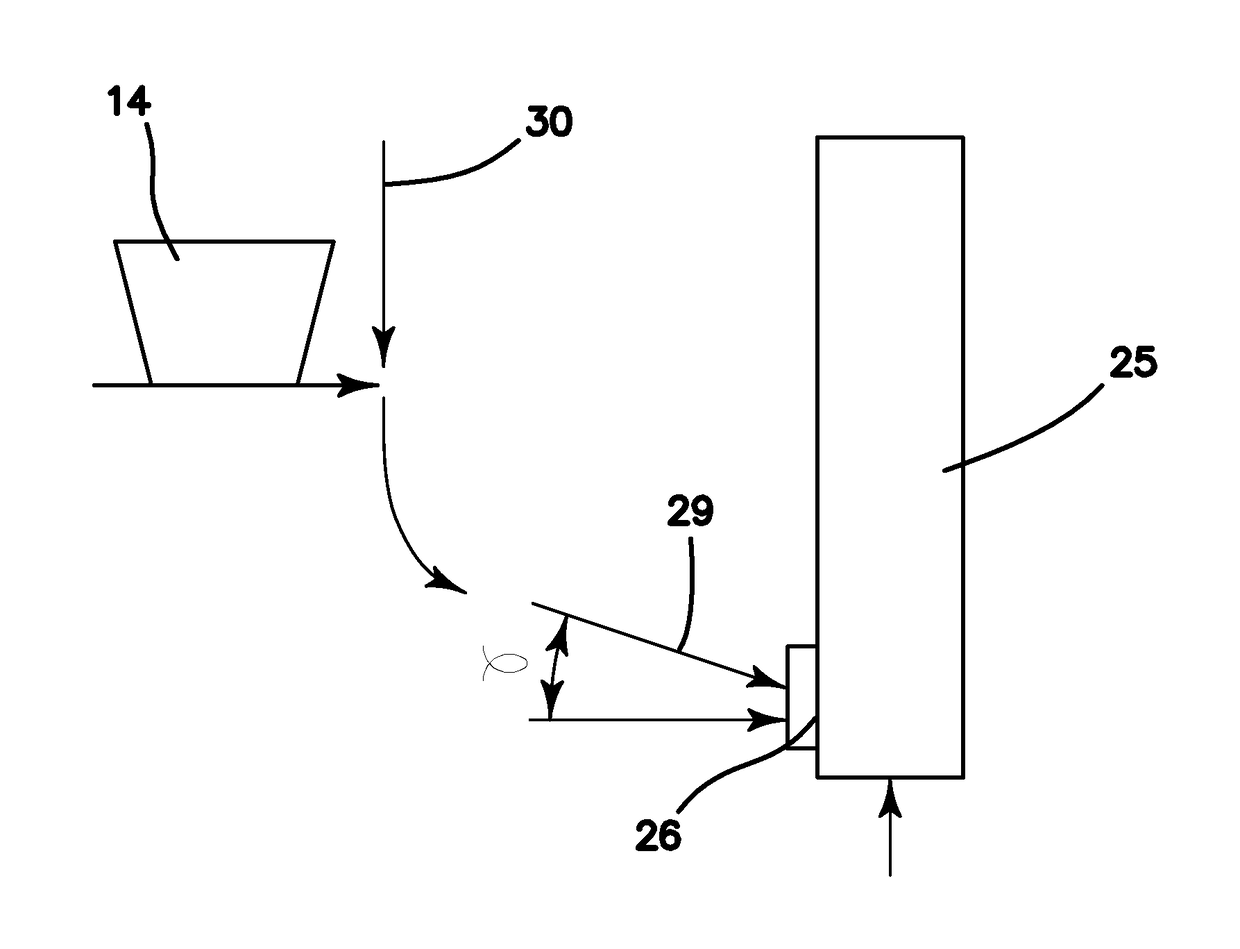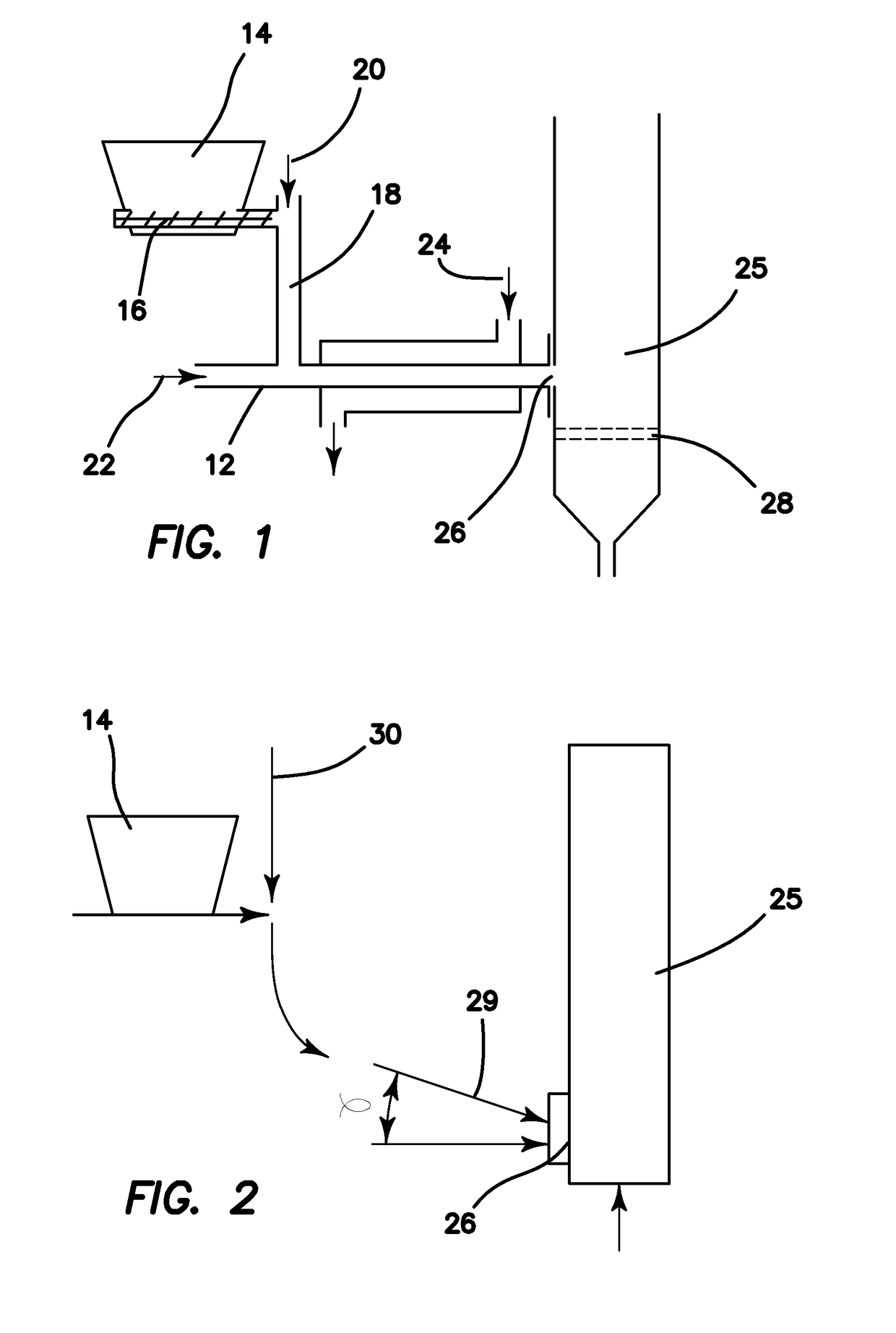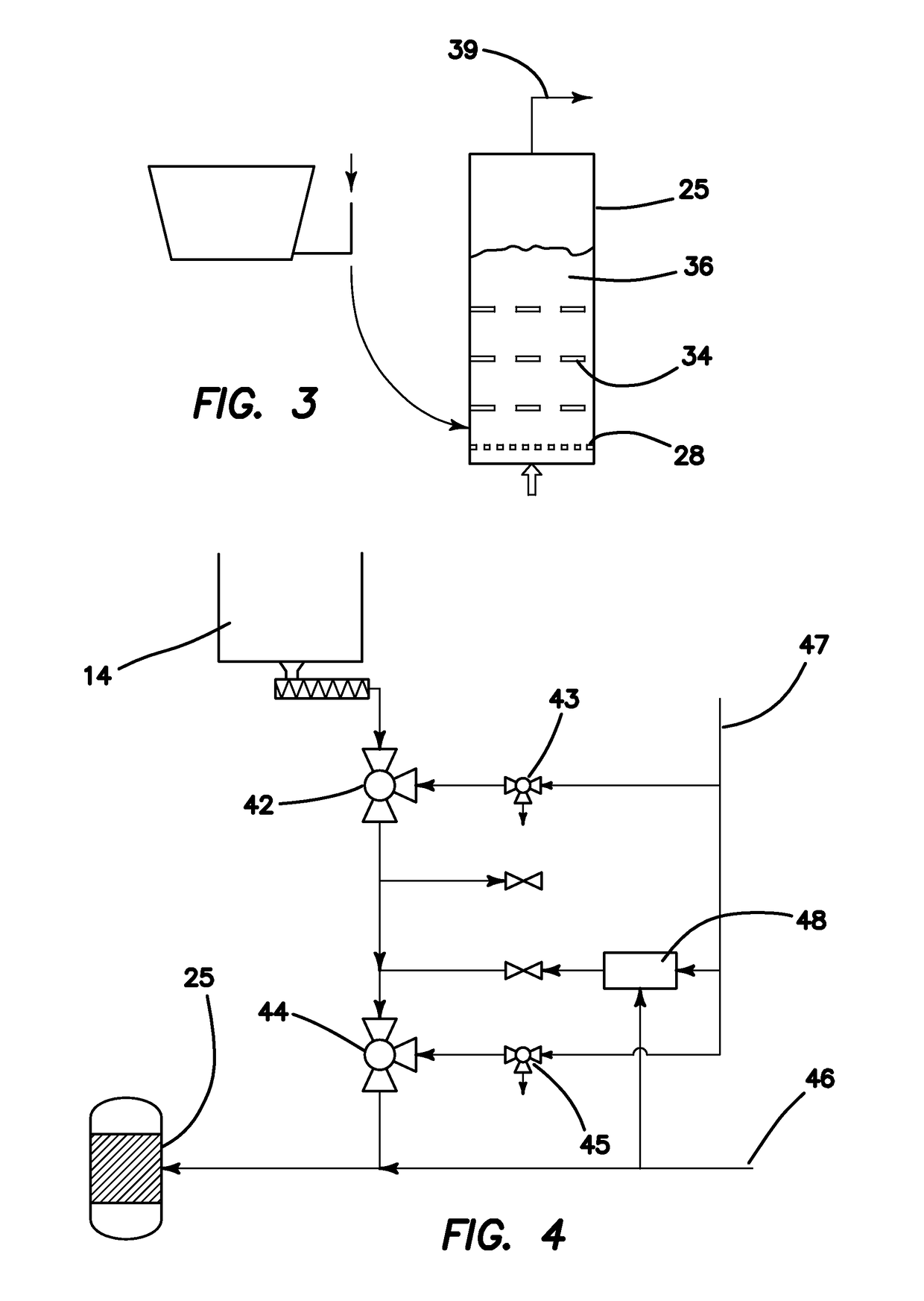Gas jet injector reactor for catalytic fast pyrolysis process
a technology of catalytic pyrolysis and injector reactor, which is applied in the direction of biofuels, waste based fuels, hydrocarbon oil treatment products, etc., can solve the problems of char formation, low yield of aromatics and olefins, and very rapid heating of biomass
- Summary
- Abstract
- Description
- Claims
- Application Information
AI Technical Summary
Benefits of technology
Problems solved by technology
Method used
Image
Examples
examples 3 through 12
[0094]The biomass transfer tube was replaced by a curved 0.25-inch OD SS-316 tube extending from the feed hopper to the biomass inlet port. The feed hopper was situated above and to the side of the reactor. The angle of entry of the feed tube into the fluid bed was 26 degrees from the horizontal, as shown in FIG. 2. A series of sieve trays made of perforated 316 stainless steel with one-eighth (0.125) inch openings and 42% open area were installed inside the reactor, as shown in FIG. 3. There were six sieve trays attached to a central, threaded rod and there was a 1-inch spacing between the sieve trays.
[0095]A series of experiments was conducted with the conditions as summarized in Table 1.
[0096]As shown in Table 1 (for example, compare examples 9 and 10 with 11 and 12), the ratio of injection flow rate (which is measured at the interface between the injection tube and the reactor, in other words, at the solids inlet to the reactor) to fluidization flow rate (measured at the fluidiz...
example 13
[0100]The reactor of Example 12 that utilized a gas jet injector feed in a 2-inch diameter nominal pipe reactor was charged with 158 g of Catalyst A, a commercially obtained fluid bed ZSM-5 catalyst containing approximately 40 weight % crystalline ZSM-5 in an inert binder. The feed gas flow rate, biomass feed rate, and temperatures were adjusted as shown in Table 2. Ground hardwood pellets containing 46.99% carbon and 6.16% hydrogen were used as the biomass feed. The results show that a high yield of aromatics and olefins can be achieved with an injection velocity of 69 cm / sec and a normalized feed temperature of 150° C. when a gas jet biomass feed system is used.
example 14
[0101]The reactor of Example 13 was charged with 161 g of Catalyst A and the experiment was repeated. The results demonstrate that the process is highly reproducible using a gas jet injector system.
PUM
| Property | Measurement | Unit |
|---|---|---|
| linear velocity | aaaaa | aaaaa |
| linear velocity | aaaaa | aaaaa |
| residence time | aaaaa | aaaaa |
Abstract
Description
Claims
Application Information
 Login to View More
Login to View More - R&D
- Intellectual Property
- Life Sciences
- Materials
- Tech Scout
- Unparalleled Data Quality
- Higher Quality Content
- 60% Fewer Hallucinations
Browse by: Latest US Patents, China's latest patents, Technical Efficacy Thesaurus, Application Domain, Technology Topic, Popular Technical Reports.
© 2025 PatSnap. All rights reserved.Legal|Privacy policy|Modern Slavery Act Transparency Statement|Sitemap|About US| Contact US: help@patsnap.com



